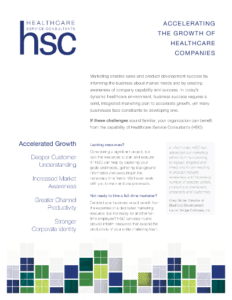Table of Contents
What is upstream marketing?
When people hear the word “marketing” most immediately think Super Bowl commercials, websites, and Google ads. For better or worse, marketing is most often associated with communications by vendors to their customers. Such “downstream” activities—social media, infographics, white papers, or even this blog—are an important part of marketing. Yet, marketing plays a much larger role in the product development process.
“Upstream” marketing activities start right at the beginning of the product development lifecycle, during the ideation and concept validation phases. These activities carry all the way through commercialization and support.
1. The Perils of Inside-Out Development
One of the biggest pitfalls that product innovators fall into is “inside-out” development. This is where internal product ideation and development occur, often led by engineering teams. These teams toss the resulting product over the wall to (downstream) product marketers. Then, marketers retrospectively define the associated value propositions and find sales opportunities.
The problem with this approach is that it muffles (or mutes) the customer’s voice throughout the development process. Too often the end product falls short of users’ expectations. It may not integrate with or complement users’ existing workflow or infrastructure. It may fail to address their biggest priorities and problem statements. Or, it does not deliver enough value to justify the associated cost, risk, and hassle of adopting a new technology.
This is especially true in the world of healthcare IT. This market is inherently (and rightly) risk averse. Budgets are often tight. And end users are time pressured and frequently resistant to change. Failing to integrate clinical, operational, and technical perspectives into the product design process can be catastrophic. This results in:
- costly re-engineering efforts
- delays in revenue realization
- a negative hit on your company’s credibility and brand strength
2. The Role of Upstream Marketing in Outside-In Development
To avoid this situation and position your company and product for a successful launch, take an opposite “outside-in” approach and include upstream marketing as part of your process.
This involves connecting with key customer personas from across the healthcare continuum—including clinical, technical, and operational stakeholders—to develop a deep understanding of their:
- challenges and problem statements
- day-to-day workflows
- underlying motivations and objectives
This all happens under the leadership of the person responsible for heading your upstream marketing, such as a product manager. Marketing works with engineering, sales, support, and other internal stakeholders to define and prioritize requirements that best address the needs of the target market and deliver tangible and measurable improvements.
Make sure to review product designs and concepts early and often with end users. Integrate feedback into the product development process from the get-go. This avoids re-work and ensures the resulting product delivers maximum value upon first launch. Taking this approach is especially important where physicians and other clinicians are adopting a new technology or workflow.
Products that introduce cumbersome workflows are quickly rejected by busy providers. So, refining the workflow before launch is pivotal for success.
3. Marketing Is (Or Should Be) Everywhere!
Marketing is an inherently customer-facing function. It plays an integral role in evangelizing the voice of the customer to all stakeholders and functions in your organization. It establishes and maintains a value-based mindset that ensures continued focus on the needs and desires of your end users. This starts with upstream marketing, during product development and continues throughout the product lifecycle to steer:
- Requirements definition and prioritization
- Concept validation and refinement
- Product road-mapping and release strategies
- Product launch and go-to-market strategies
- Pricing and packaging models
- Training and support models and strategies
- Sales enablement
- And more!
For many organizations, this represents a shift in how they design and deliver products and services. The good news is it’s never too late to adopt an outside-in approach. The benefits far outweigh the challenges associated with re-structuring internal teams and processes. The result? More focused development, faster time-to-market, higher value products, and increased customer delight…just to name a few.
Photo by NeONBRAND on Unsplash




